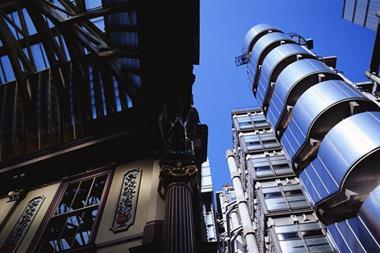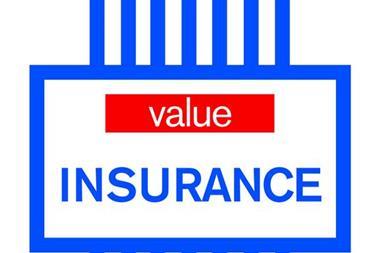The sands of D&O insurance are shifting as companies adapt to tighter regulation and increased liabilities post-Madoff. We find buyers and sellers treading carefully
The exposure of fraudsters such as Bernard Madoff and Allen Stanford, coupled with the global financial meltdown and subsequent insolvencies, has given directors’ and officers’ insurers plenty to think about in recent years.
As financial services companies are sued for becoming embroiled in the Madoff and Standford Ponzi schemes, D&O underwriters have been forced to go to greater lengths to examine who, and exactly what, they are insuring.
Many have introduced more exclusions into their D&O policies to limit their exposure to Ponzi-style claims. As a result, rates have been hiked up in the past year – at times by 100%.?In some cases, D&O underwriters have placed restrictions on what they will insure, particularly in relation to financial institutions.
On the flipside, directors and officers up and down the land are realising that, in a tough economic climate, they risk being held to account for company failure. That has prompted those who had never considered buying D&O cover to purchase policies and those with cover to increase their limits.
Novae joint head of management liability Matthew Carr says D&O rates have risen by about 30% in the past year. “Across the sector, rates have been increasing systematically, as there’s been heavy exposure on the errors and omissions side,” he says. “In the next 12 months, rates will increase further, although it’s too early to quantify how much they will grow.”
But Carr says D&O underwriters are at risk of exposure from the large number of companies becoming insolvent in the economic climate. “D&O carriers also write against insolvency, and there have been a lot of insolvencies in the automotive, property and construction sectors. Administrators will look at D&O policies as they try to recover money,” he says.
Risk awareness
The struggling economy has left directors and officers in SMEs feeling vulnerable, Carr says. “You’d be surprised how many SMEs don’t buy D&O cover,” he remarks. “But now there are SMEs seeking to purchase D&O for the first time or increase their limit.”
The UK D&O market – measured in terms of gross written premium (GWP) – grew in 2008 for the first time in three years, according to Datamonitor (see chart, page 22).
Janet Edey, who jointly heads Novae’s management liability business with Carr, says: “Companies domiciled in the USA, or those with US shareholders, had the greatest number of claims in 2008. But there are a lot of players in the market chasing non-US-domiciled D&O business because claims are relatively infrequent.
“But it’s a very long tail and many underwriters are not with the same insurer that long.”
The Madoff and Stanford frauds have had a big impact on how insurers do business, believes Carr. “Madoff generated notifications globally and lots of policies were affected, so it has informed underwriters’ judgment. There are now Madoff-type exclusions,” he says.
The financial crisis has increased Lloyd’s stature in the D&O market, adds Carr. “Concerns about the stability of major US carriers drew a lot of business to Lloyd’s because of its central fund and its rating,” he says.
Zurich Global D&O manager Doug Robare believes financial institutions have borne the brunt of the D&O rate increases. “In the financial institutions space, we’re seeing 20% increases in rates on the past year – it’s the financial services sector that’s getting sued. And we’re seeing a 10% increase in the commercial space,” he says.
According to Robare, more capacity has come into the market since the start of the financial crisis. “But the additional capacity is not having an impact on the price of primary cover; it’s having an impact on excess insurance,” he says.
The financial crisis has caused a “flight to quality” as companies place D&O cover, he says. “If you’re an FTSE-100 company, you’re looking at the validity of the credit rating of the insurer.”
He points to other complex issues driving change. “US president Barack Obama wants to get corporate tax from companies based in Bermuda or the Cayman Islands, so some of these companies have reincorporated in Switzerland, for example.”
As such companies move into new jurisdictions, the number of insurers equipped to serve them falls. “Dealing with multinationals stresses the capacity of insurers,” Robare says. “If you’re dealing with, say, five jurisdictions, the capability is smaller and smaller.”
The Madoff fraud has also led to the UK government tightening its regulatory grip, particularly in relation to financial services. This will lead to more legal proceedings brought against directors and officers, Robare argues. “There’s a new bribery bill being proposed in parliament that could become law this year. The government will be more proactive and there will be an increase in regulatory proceedings.”
Rising rates
Although financial institutions are seeing increases in the cost of their D&O cover, some companies can still get discounts if they shop around, says Richard Watts, who leads the D&O business at Miller. “The financial crisis has created two D&O markets. You’ve got the financial institutions market, where you’ve seen cover restricted and increases of 15%,” he says. “And the commercial market, where you can still get reductions because you haven’t had the losses.”
Watts adds that the Madoff fraud has led to regulation being tightened, which will mean more investigations taking place. “The losses from Madoff have given regulators more power, so there will be more claims for [insureds] attending investigations,” he says.
CNA Europe’s European underwriting director of financial lines, John Taylor, says D&O rates for financial institutions have been increasing ever since the collapse of Lehman Brothers in September 2008. Some large investment banks have experienced 100% increases in rates.
“At the lower end, small well-managed equity funds not exposed to Madoff or Stanford have seen increases of 10% to 25%,” he says. “On the commercial side, though, there have been increasing instances of insolvency and bankruptcies, and it’s not had a direct affect on rates, which by and large have remained flat.”
But Taylor argues that high-profile frauds will not have a lasting impact on the market. “Insurance is cyclical – there will be another blow to financial markets in the future and no one will have seen it coming,” he says. “Financial institutions are having to look inwardly more and check their own internal procedures. This makes them more attractive to insurers as it makes them better risks.”
Low-profile risks
Chartis UK financial lines vice-president Andre Basile says that while the large-scale Madoff and Stanford frauds hit the headlines, it is the lesser-known cases that are of more concern. “The size of the Madoff fraud makes it stand out. But what has a lasting impact is the frequency of alleged frauds that don't make the headlines.”
Basile believes the increase in regulatory activity as a result of fraud cases should be a concern for small and large companies alike. As a consequence, the SME D&O market is expanding quickly. “We believe the take-up among SMEs has doubled in the past five years because of broader cover and better pricing. The lower premiums are based on more efficient distribution rather than lower risk assessment,” he says.
Angel Underwriting business development director Gary Green attributes the take-up of D&O among SMEs to a case involving the first company to be prosecuted under the Corporate Manslaughter Act. The case, which has been brought against Cotswold Geotechnical Holdings, is to be heard in Bristol Crown Court next month.
“This case has raised the profile of the risks associated with issues such as corporate manslaughter and has shown small business owners that there is a very real risk,” he says.
JLT head of D&O liability Mike Lee says D&O cover is becoming much more accessible to SMEs. “Directors are wary of the indemnity offered by their companies, so they are looking at D&O cover,” he says.
He sums up the market. “Many insurers are coming out with specialised products, D&O cover is becoming increasingly available online and can be purchased with a credit card, and rates have dropped by 20% in the SME D&O market in the past year. And there is loads of competition.” IT
Hosted by comedian and actor Tom Allen, 34 Gold, 23 Silver and 22 Bronze awards were handed out across an amazing 34 categories recognising brilliance and innovation right across the breadth of UK general insurance.













































No comments yet